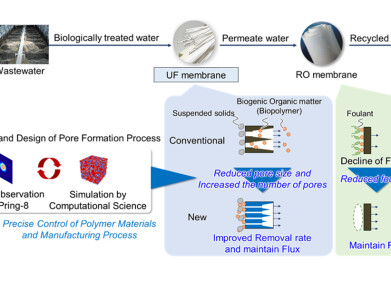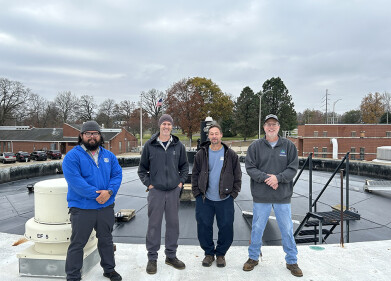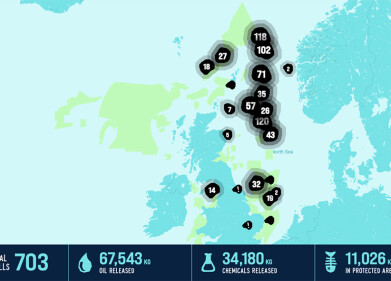Water/Wastewater
Pumping Solutions for Flood Control
Jul 19 2010
Flood control places stringent demands on the pumping solution, not least with regards to reliability. Through a combination of technical know-how, industry leadership and solution-oriented product development, Grundfos is able to supply axial and mixedflow pumps for flood control, tailored and optimised for the application. This is made possible through a policy of working with locally-based companies that possess the
knowledge, have the history and know the rules of the game in their markets. This is especially true for flood control, and for the entry of Grundfos into new flood control markets in the USA, Korea, and Europe.
Flood and flood control
Flooding can happen in many ways, however the catastrophic conditions that result is common to all flooding. The immediate effect is loss of life, physical damage caused to infrastructure, and the loss of livestock. Secondary effects include the contamination of drinking water and water supply, which can lead to diseases, and the loss of crops and food supply.
Flooding happens in several ways. Inland flooding can be the result of either slow flooding due to sustained heavy precipitation, such as monsoons or snow melt, or fast flooding caused by extreme and intense rainfall; for example with storms such as tropical cyclones. Coastal floods can happen slowly, such as high tides after a storm or through rising sea levels, or quickly as a result of storms, hurricanes or even a tsunami.
Due to climate changes and increases in population and urbanization, the amount of flood scenarios has been increasing over the past decades. Populations have also become more vulnerable, with increased settlement in low-laying areas and near river deltas. However, flooding can also hit where least expected. Unusual weather patterns can – and do – cause unexpected storms and heavy rains in regions where historical data has offered no warning. In recent years, many examples of such unexpected floods have happened in both Europe and Asia.
Most affected are less-developed countries with large populations. Here, cities tend to become overpopulated due to the influx of people attracted by the prospect of work. Major cities in Asia, including Kuala Lumpur, Jakarta, Taipei, Seoul, Bangkok, and Shanghai, all have flooding problems. Indeed, any region faced with high annual rainfalls, increased populations, and expanding cities will increasingly be called upon to focus on flood control in cities.
Thinking ahead to counteract flooding
Basic methods of flood control have been practiced since ancient times. These include reforestation, dams, reservoirs and floodways – artificial channels that divert floodwater. These days, floodways are often built to carry floodwater into reservoirs where excess water is pumped into rivers. Flood control strategies usually cover a whole city or region. In practical terms, the solutions typically involve multiple pumping stations at several locations to ensure sufficient flood management when required.
However, the decision to implement a flood control strategy is often made when it is too late: a flood has already happened, trailing major damage in its wake. In some cases, even a wake-up call of this kind is not sufficient; the flood is forgotten until, several years later, another incident occurs. Flood control projects very easily become political bones of contention. There are, of course, financial and practical issues to be considered, and it will always be tempting to focus on immediate problems rather than hypothetical disasters. Even so, authorities should view flood protection as a vital aspect of ensuring a safe environment for everyone.
Ultimately, lives can be at stake.
Any flood control strategy should be based on the overall city plan, carefully identifying where pumping stations are necessary – and which design will work best. This process could also help reduce construction costs, to the benefit of everyone involved. Getting the design right requires accurate information, so it is always worthwhile for consulting/design engineers to work closely with equipment suppliers to identify the optimum solution in each individual case.
Today, pump suppliers have a lot of know-how and experience, which is of value to the design of future pumping stations for flood control. Computational Fluid Dynamics (CFD) simulations are an example of a useful tool that a solution-oriented pump supplier can offer. CFD simulations enable the stakeholders to actually prove the chosen design, before carrying out model testing or the actual infrastructure
investments. This makes it possible to evaluate, adjust and eliminate any risk. Upon request Grundfos can provide CFD simulation services.
Flood control pumping is characterised by a requirement for high flow and low head. Axial and mixed-flow pumps meet these requirements: they are high-flow, lowhead pumps specially designed to pump large volumes of water. They are often installed in columns, an ideal design for these applications. Reliability is the most important factor when dealing with flood control pumping stations. The duty time is limited and when the pumping station for flood control has to meet its duty point it is essential that it works.
Because of the seasonal or unforeseen nature of many flood scenarios, a pumping station for flood control may only run once or twice a year. This places heavy demands reliability of the pumping solution. Through a combination of technical know-how, industry leadership and solution-oriented product development, Grundfos is able to supply axial and mixed-flow pumps for flood control, tailored and optimized for the application.
Focus on business and new markets
Grundfos has a long-standing tradition of acting locally in a global market. However, this is rarely the case for customers, who have to work within the regulatory demands of their home markets. By partnering or acquiring companies with the right profile, Grundfos is able to ensure a strong local commitment while maintaining the all-important global focus. This enables Grundfos to meet the significant challenges posed by national standards, regulatory demands and specifications when entering new regional markets and countries.
In 2008, Grundfos acquired KJI Co of Korea. With a long history manufacturing axial and mixed-flow pumps for flood control in accordance with the specifications for all major markets, KJI Co was precisely the organization Grundfos was looking for to develop further the flood control business worldwide. With the integration of KJI Co, Grundfos has now an R&D team, and production plant dedicated to flood control products, as well as access to the competencies and application knowledge required for flood control.
The new manufacturing facility for axial and mixed-flow pumps in Gwangju, Korea includes a big testing bed with a 600,000 liter capacity, where the biggest column measures 2.2 meters. The power generator produces 2800 HP and up to 3300 Volts that can be transformed to 6600 Volts. The plant has equipment ready for the production of pumps up to 1000 kW (1340 HP). To this knowledge of developing and manufacturing such pumps, Grundfos could add a tradition of tailoring solutions for specific applications, which the company’s global reach and global production makes possible. For example, the ability to do CFD simulations can offer significant infrastructure and design savings from the start.
Integrating the knowledge and history of KJI Co with the solution-oriented global reach of Grundfos was far from a purely technical exercise of adapting pumps ranges to the requirements of the new markets. Huge resources have been invested, ensuring that knowledge and competencies as well as the extensive training and new documentation required for an entirely new supply chain all come together and support global Grundfos production. This integration process enables Grundfos to know the rules of the game in all markets where the company is represented and to be equally competent at serving customers in both 50 Hz and 60 Hz
markets globally.
Grundfos has supplied axial and mixed flow pumps to projects in Korea, Dubai, Indonesia, Malaysia, China, India, Belgium, Denmark, and the USA.
Events
Apr 08 2025 Targi Kielce, Poland
Apr 08 2025 Bahrain
Apr 10 2025 Beijing, China
Apr 10 2025 Beijing, China
Apr 15 2025 Moscow, Russia














